Asian development bank (ADB) has been Mongolia`s largest multilateral development partner since 1991, playing a central role in the country`s transformation to a middle income, market-based economy.
For this reason GoGo Mongolia interviewed with ADB Country Director in Mongolia Yolanda Fernandez Lommen. Prior to becoming Country Director, she worked as Principal Economist at ADB’s East Asia Department, which is responsible for ADB's operations in the People's Republic of China (PRC) and Mongolia. Yolanda joined ADB over 17 years ago during which she has worked mainly on Mongolia and the PRC.
Prior to joining ADB Yolanda was assistant professor of Economics at Complutense University in Madrid, and Head of the Asian Studies Unit at the Royal Center for International Relations in Madrid.
Yolanda is Spanish and holds a DPhil on the contribution of the sources of growth in the Chinese economy in the first two decades of the economic transition.
NOW MY FOCUS IS ENTIRELY ON MONGOLIA
-Do you speak Chinese?
-A little bit.
-Do you still follow Chinese economic news?
-I don’t have the time since I became the country director for Mongolia. To follow developments in the Chinese economy in the same way I used to do in the past I need more time, but as there is always information in the news about the Chinese economy, the second largest economy in the world, I can still follow the main trends, but now my focus is entirely on Mongolia.
Becoming ADB’s country director for Mongolia was my dream job.
-In your opinion which sectors have potential in terms of increasing Mongolian exports to China?
-Mongolia and China have a very close relationship. China is Mongolia’s largest trade and investment partner. This means that a very solid relationship already exists. In terms of potential, there are various sectors of interest, but perhaps the most interesting one is meat exports. I was glad to read that China has granted 24 licenses for meat exports. This is an area that I believe Mongolia has significant potential to increase export and diversity the sources of growth. Also dairy products like milk and yogurt can export to the Chinese market. To realize this potential Mongolia needs to increase the sanitary and phyto-sanitary standards to meet the requirements of the Chinese market.
-Were you dispatched at your own volition as country director for Mongolia?
-Yes, becoming ADB’s country director for Mongolia was my dream job since I visited Mongolia for the first time in 2001. When the announcement for the position of country director was advertised I immediately applied. I went through a competitive process and I was lucky to be selected. I believe that my previous work in Mongolia as ADB’s country economist and programs officer and my overall country knowledge were important factors in this process.
-How did you cope with your first winter? Was it hard to adapt?
-I have experienced winter in Mongolia many times since 2001. I love winter and for me Mongolia’s beauty in winter is very special. When I close my eyes and think about Mongolia I see Mongolia covered in snow, white. There are some similar elements between Madrid, my home town, and Ulaanbaatar in terms of the weather. Madrid has continental weather, is on a high plateau, surrounded by mountains that are covered in snow in winter. Winters are cold and dry, summers are hot. The temperature does not go down as low as in UB, but in general terms it is similar and I have adjusted very well.
-Is there any other economist in your family?
-I am the first and only one economist in the family.
-How and where do you spend your weekends?
-I like to go outside with my friends. I like nature very much, going for long walks and sometimes hiking. My main hobbies are reading, cooking, and spending time with friends.
WHEN I CLOSE MY EYES AND THINK ABOUT MONGOLIA I SEE MONGOLIA COVERED IN SNOW, WHITE
-We’ve seen you in Mongolian deel and vests many times. Do you usually dress in national costumes of countries that you stay at?
-No, I don’t wear national costumes in other countries, only in Mongolia, I find deel very elegant, comfortable and easy to wear.
I feel I am part of Mongolia when I wear a deel. I do not have any particular preference for brands, deels are all beautiful.
Asian development bank (ADB) has been Mongolia`s largest multilateral development partner since 1991, playing a central role in the country`s transformation to a middle income, market-based economy.
For this reason GoGo Mongolia interviewed with ADB Country Director in Mongolia Yolanda Fernandez Lommen. Prior to becoming Country Director, she worked as Principal Economist at ADB’s East Asia Department, which is responsible for ADB's operations in the People's Republic of China (PRC) and Mongolia. Yolanda joined ADB over 17 years ago during which she has worked mainly on Mongolia and the PRC.
Prior to joining ADB Yolanda was assistant professor of Economics at Complutense University in Madrid, and Head of the Asian Studies Unit at the Royal Center for International Relations in Madrid.
Yolanda is Spanish and holds a DPhil on the contribution of the sources of growth in the Chinese economy in the first two decades of the economic transition.
NOW MY FOCUS IS ENTIRELY ON MONGOLIA
-Do you speak Chinese?
-A little bit.
-Do you still follow Chinese economic news?
-I don’t have the time since I became the country director for Mongolia. To follow developments in the Chinese economy in the same way I used to do in the past I need more time, but as there is always information in the news about the Chinese economy, the second largest economy in the world, I can still follow the main trends, but now my focus is entirely on Mongolia.
Becoming ADB’s country director for Mongolia was my dream job.
-In your opinion which sectors have potential in terms of increasing Mongolian exports to China?
-Mongolia and China have a very close relationship. China is Mongolia’s largest trade and investment partner. This means that a very solid relationship already exists. In terms of potential, there are various sectors of interest, but perhaps the most interesting one is meat exports. I was glad to read that China has granted 24 licenses for meat exports. This is an area that I believe Mongolia has significant potential to increase export and diversity the sources of growth. Also dairy products like milk and yogurt can export to the Chinese market. To realize this potential Mongolia needs to increase the sanitary and phyto-sanitary standards to meet the requirements of the Chinese market.
-Were you dispatched at your own volition as country director for Mongolia?
-Yes, becoming ADB’s country director for Mongolia was my dream job since I visited Mongolia for the first time in 2001. When the announcement for the position of country director was advertised I immediately applied. I went through a competitive process and I was lucky to be selected. I believe that my previous work in Mongolia as ADB’s country economist and programs officer and my overall country knowledge were important factors in this process.
-How did you cope with your first winter? Was it hard to adapt?
-I have experienced winter in Mongolia many times since 2001. I love winter and for me Mongolia’s beauty in winter is very special. When I close my eyes and think about Mongolia I see Mongolia covered in snow, white. There are some similar elements between Madrid, my home town, and Ulaanbaatar in terms of the weather. Madrid has continental weather, is on a high plateau, surrounded by mountains that are covered in snow in winter. Winters are cold and dry, summers are hot. The temperature does not go down as low as in UB, but in general terms it is similar and I have adjusted very well.
-Is there any other economist in your family?
-I am the first and only one economist in the family.
-How and where do you spend your weekends?
-I like to go outside with my friends. I like nature very much, going for long walks and sometimes hiking. My main hobbies are reading, cooking, and spending time with friends.
WHEN I CLOSE MY EYES AND THINK ABOUT MONGOLIA I SEE MONGOLIA COVERED IN SNOW, WHITE
-We’ve seen you in Mongolian deel and vests many times. Do you usually dress in national costumes of countries that you stay at?
-No, I don’t wear national costumes in other countries, only in Mongolia, I find deel very elegant, comfortable and easy to wear.
I feel I am part of Mongolia when I wear a deel. I do not have any particular preference for brands, deels are all beautiful.
-Do you have a favorite Mongolian dish?
-I like very much tsuivan and yak cheese.
INFRASTRUCTURE IS IMPORTANT PART OF OUR STRATEGY
-Now I will shift to questions related to your work. ADB has stated that its cooperation with Government of Mongolia during the period leading 2020 will be aimed at fostering inclusive growth in the country.
While the drivers of economic growth are usually in urban areas, rural areas should also benefit.
On the other hand, in developing different medium and long-term agendas some labeled as economic revitalization program, those in power tend to refer to numbers such as 6 or 7 percent growth rate. Inclusive growth is hardly emphasized. The wider public and the media only recently started to understand that inclusive growth is a way more meaningful than high rate growth. What is inclusive growth in your understanding?
-Inclusive growth is a core element in ADB`s country partnership strategy in Mongolia. We approved a new country partnership strategy last year in May, with a strong focus on inclusive growth. One way to define inclusive growth is the type of growth that goes to everybody and to every sector. You share the benefits of growth equally within the economy and within the people. For instance, supporting agriculture in the same way you support mining, and distributing the benefits widely. Another example of inclusive growth is gender equality, taking measures to ensure that women benefit from economic growth in the same way as men, and have the same opportunities.
Regionally, growth has to be inclusive as well. While the drivers of economic growth are usually in urban areas, rural areas should also benefit. This can be achieved through income distribution policies that ensure that the entire population participates and benefits from economic growth.
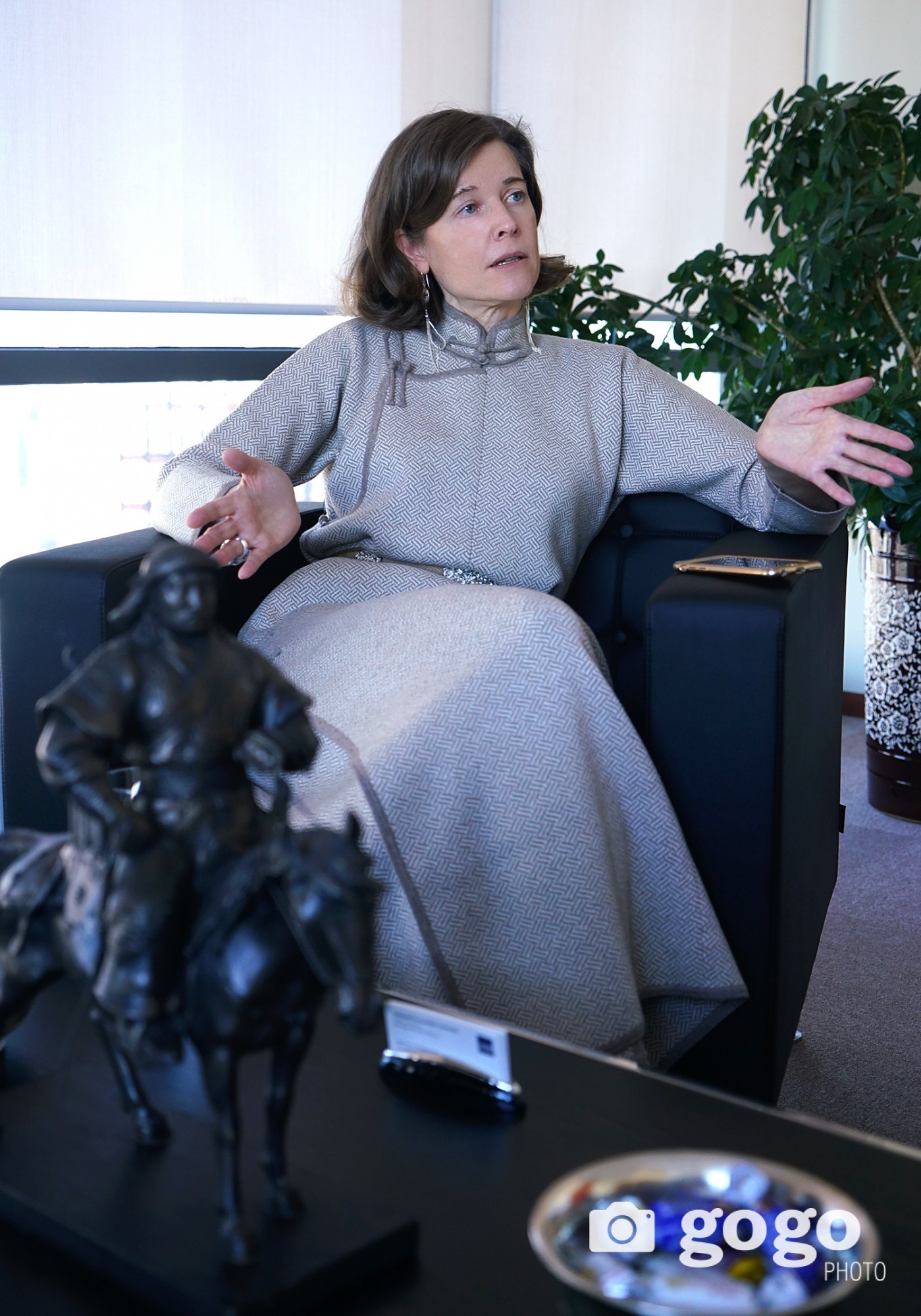
-ADB-GOM partnership strategy appears to focus on infrastructure with a view of diversifying the economy. Can you please elaborate on this?
-This is one of the three pillars of the strategy, actually the second.
The first pillar is socio-economic stability, including support to SMEs and agro-businesses to create more jobs, diversify the economy and generate income opportunities to make growth inclusive and sustainable.
Also under this pillar we focus on the improved delivery of public services, in particular education and health, to increase both the quality and the access. Finally, under this pillar we include important reforms on key economic policies to ensure financial sector stability and develop an enabling environment for the private sector.
The second pillar of the strategy is about infrastructure with a view of diversifying the economy. This area has 2 sub pillars. One is about connectivity, focusing on transport infrastructure to facilitate Mongolia’s access to external markets and reduce transport and logistic costs to foster import competitiveness, in particular of non-mining products. That’s why infrastructure is important part of our strategy.
Under this pillar we are also working from the urbanization point of view. By integrating economic development in urban planning we can set the foundations for new drivers of growth that will result in employment opportunities and economic diversification. If you provide infrastructure, like ADB is doing in the ger area in selected sub centers (paving roads, access to water, sanitation, electricity, etc.) it is only a matter of time until the private sector thrives. For the same reasons, we are also including SMEs incubators in our urban development projects.
WE ARE GREENING OUR PORTFOLIO VERY RAPIDLY
-The third pillar or focus area is environmentally sustainable development. Which activities will be implemented under this pillar?
-This is a very important pillar. In the past ADB was not so active in this area, but we are now. We are greening our portfolio very rapidly. This pillar covers various areas of support. One is to improve the sustainability and management of natural resources in Mongolia preserving the environment. Mongolia is blessed with natural resources and this resources have to be managed effectively preventing environmental degradation.
One good example of our coming activities in this area is renewable energy in western aimags.
The second element is to reduce carbon emissions and pollution. One good example of our coming activities in this area is renewable energy in western aimags.
Third area is disaster risk management. Due to its harsh climate Mongolia is prone to natural disasters. So far the strategy has being focusing on emergency support once the natural disaster happens. But it is equally important to work on prevention, early warning and risk management. It is important to be prepared, to have a mechanism in place to be ready and prepare. That way you can mitigate the impact of natural disasters.
-Mongolian south part is rich with renewable resources such as wind and solar. But you mentioned about western aimags.
-It`s a very good location. We are thinking of a combination of wind and solar plants and perhaps hydro power. The western aimags are suitable for these plants and as it is a remote and less accessible area. It is also important to provide sources of power to the population in this region. ADB has projects in all aimags in Mongolia.
HYDROPOWER IS NOT NECESSARILY POLITICALLY SENSITIVE, IT IS ACTUALLY A COMMON SOURCE OF POWER IN MANY COUNTRIES
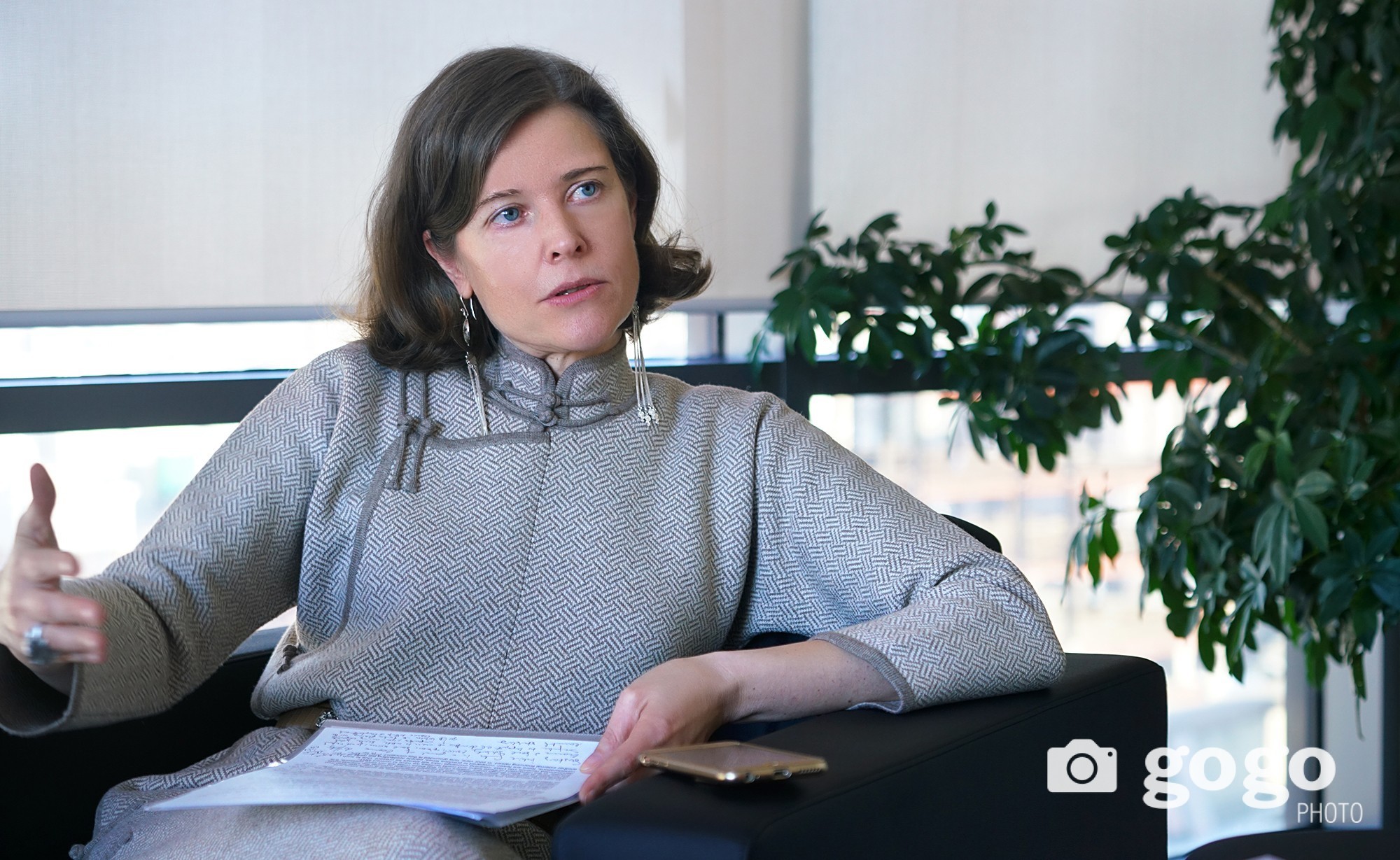
-Hydro energy is a sensitive and political issue in Mongolia. Are you planning to construct totally new hydro power station or will you finance a project, which already started?
-We are at the early stage of the processing of the project. We are currently undertaking the feasibility study. Hydropower is not necessarily politically sensitive, it is actually a common source of power in many countries in the world that have the resources.
-To date, ADB has extended USD 1.9 billion worth of loans and grants that have supported over 280 projects and programs in health and other social sectors, finance, infrastructure, urban development, etc. What is the share of loans and grants, respectively, in this total sum of USD1.9bln?
-ADB has approved sovereign loans totaling USD1.55 billion, non sovereign loans totaling USD 96 million, grants in the amount of USD 229 million, and technical assistance projects worth USD 137 million for Mongolia.
Government of Mongolia has now decided to rely on concessional lending rather than borrowing from capital markets.
-In 2017-2018 ADB has committed USD 468 million for loans extended to Mongolia. USD 404 million of which are OCR loans. Average maturity of such loans is usually up to 20 years with LIBOR+0.5 interest rates. This means the average annual rate would be 2 percent.
The Prime Minister during his recent visit to Republic of Korea finalized USD 700 million loan negotiations. Interest rate of this loan is 0.2 percent, the 20-year Japanese loan has 0.8 percent interest rate, whereas ADB loan rates relatively speaking are higher.
-ADB lending operations are concessional and offer similar terms as other International Financial Institutions. Operations have long grace periods and maturity terms. We have different lending modalities, but the interest rate is always low. Governments can offer financial support as part of the bilateral relations at different interests rates.
-As was just discussed, the Government keeps incurring external debts by getting loans and issuing bonds since 2012. Although cost of credit at 0.2, 0.8 interest which is way lower than that of domestic borrowing may seem affordable, due to sizeable principal amounts the interest costs are not small at all.
Even though policy makers claim that these costs will not incur pressure, it is doubtful. In the repayment of these loans and credit facilities we have to convert MNT-denominated revenue into USD, meaning exchange risks will always be present. Due to such considerations, there are fewer, compared to previous times, people applauding the news of another external financing raised. In your view, how grounded is this concern?
-Development is costly and takes long time. Every advanced economy in the world today has gone through a long and painful period of development, in many cases over more than 100 years where substantial public resources and government involvement has been the key.
The key issue then is how to borrow, without risks. There are different options and the Government of Mongolia has now decided to rely on concessional lending rather than borrowing from capital markets as it is more affordable and entails less risk.
This decision, coupled with improved economic trends and successful economic reforms has resulted in the upgrading of Mongolia’s risk rating recently, which is a positive development.
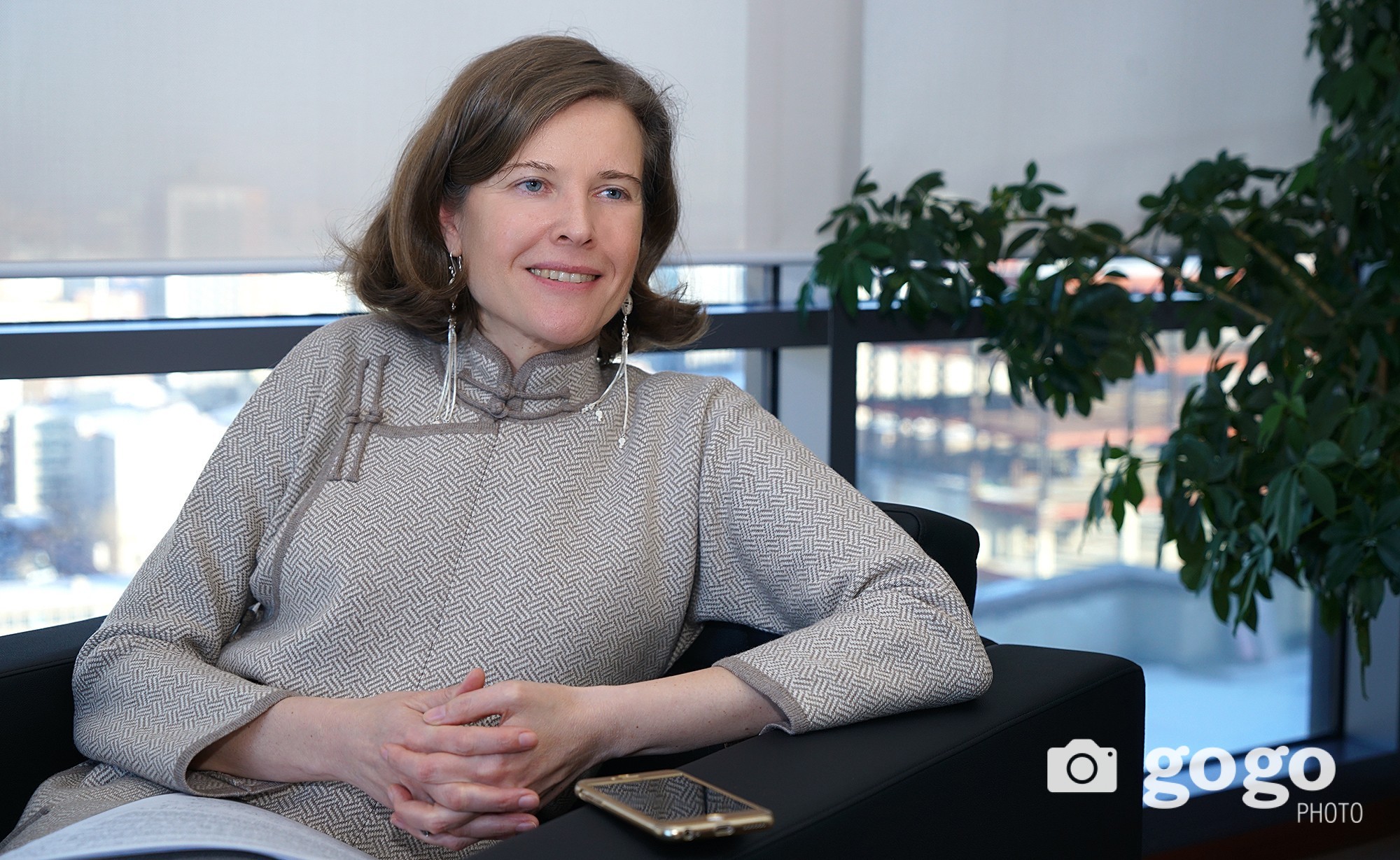 -One of the 9 projects which the USD 468 million financing will support is Ulaanbaatar air quality improvement program, and this is a policy-based loan (PBL). What, in fact, is policy based loan?
-One of the 9 projects which the USD 468 million financing will support is Ulaanbaatar air quality improvement program, and this is a policy-based loan (PBL). What, in fact, is policy based loan?
-PBL is one of the various lending modalities that ADB offers.
Policy-based lending is different from project development, the focus is about introducing and funding important policy changes that will addressed existing shortages or problems and result in greater efficiency.
-As air pollution is still very very high currently, which activities are planned for implementation to improve air quality?
-ADB is currently processing a PBL to improve air quality in UB. Under the program we are combining different actions, like for instance support to the legal framework that is needed and the provision of clean sources of power.
The legal framework is very important as there is need for a mechanism that rewards the efforts of those that reduce emissions and pollution, and to sanction those who do not follow the standards. One important area of focus will be the ger areas where it is important to provide alternative ways for heating that are less harmful to human health.
«AFFORDABLE HOUSING AND REDEVELOPMENT IN UB CITY» PROJECT AIMS TO DEVELOP 10,000 UNITS FOR 40,000 PEOPLE
-Out of 9 projects to be implemented in the next year, «Affordable housing and redevelopment in UB city» project attracts attention. USD 80 million is allocated for this project. Is it jointly implemented with the Ministry of Construction and Urban Development? Even though a lot has been said about affordable housing, nothing has been done besides two completed apartments (Buyant Ukhaa 1 and 2) under the State Housing Corporation.
-We are currently working on the project to address housing affordibilty issues in ger areas. We are considering an initial contribution around 80 million dollar but the scale of the project is larger and will be strengthened by contributions from the Government of Mongolia, the private sector, and other development partners support.
This project is focusing on developing eco-districts with eco-houses in the ger areas. Each house will have good insulation for energy efficiency and rely on renewable energy. This way the project will have to main impacts, first, improve living standards and address housing shortages, and second, reduce pollution. The initial plan is to develop 10,000 units for about 40,000 people. I am very excited about this project and I do look forward to see the progress.
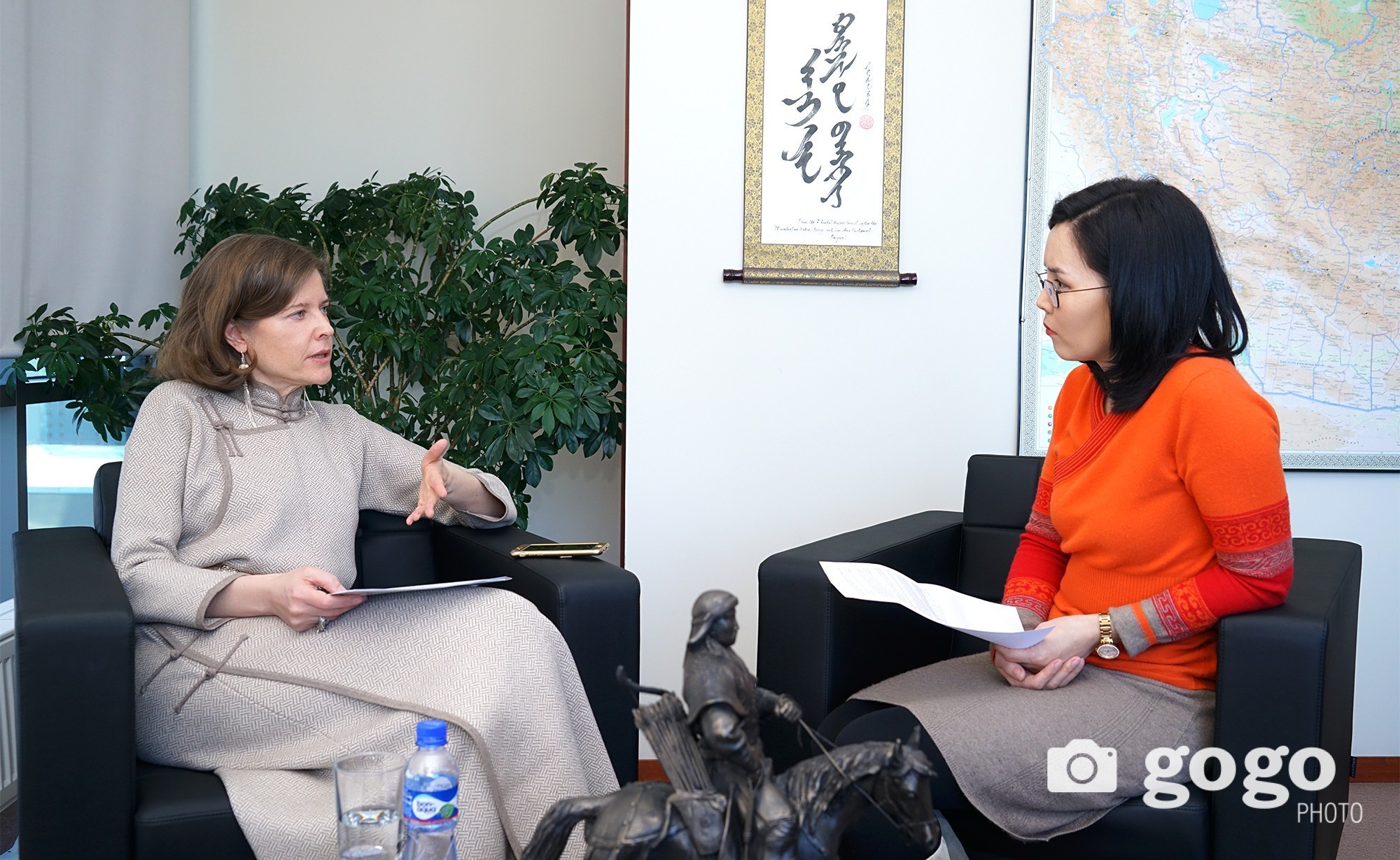
-ADB has agreed to provide USD 900 million loan financing as part of IMF package, and provided already the first 250 million last year. What is the relationship and interdependence between ADB and IMF? Is ADB member of IMF?
-ADB and the IMF both International Financial Institutions. We work closely together to maximize the support we can provide and minimize duplication and overlapping.
-Which policies do you adhere to when dealing with local business entities? How do you support them?
-ADB support in Mongolia to date has primarily focused on sovereign lending, the Government of Mongolia is our client. We have supported this way SMEs as well through loan credit guarantees and trade facilitation programs that are channeled through local banks. ADB has a specialized private sector department that supports private sector operations. We recently held a successful workshop in Mongolia from which various opportunities will soon emerge for ADB to support private sector operations.
We have supported SMEs as well through loan credit guarantees.
-Is there any particular sectors to get a support from ADB?
-ADB is the largest multilateral development partner in Mongolia. We have a long history in Mongolia and a large portfolio. This allows us to be present in many sectors including energy, agriculture, roads, urban development, financial sector reform, public sector management, health, education, climate change and regional cooperation.
-In providing financing and grant to applicant countries or entities, international organizations tend to propose advisory/consultancy services to be recruited. This practice exists in your bank as well. Some view very negatively about this practice of entering into costly consultancy agreements with foreign consultants.
Does your bank require recruitment of consultancy services for every project implemented, in particular international firms?
-We rely both on national and international consultants to prepare and implement our projects. This way we can combine the solid expertise and country knowledge with the lessons from international experiences. In most cases, consultants are supported under technical assistance projects which are grant resources.
-Last April, the cabinet meeting resolved to implement USD 100 million program in the banking sector. This was to due objective risks in the banking sector, caused by repayment problems, rising NPL, solvency risks of banks providing liquidity to borrowers, ultimately leading to risks in core operations or financial intermediary services of the banks.
Therefore, Government of Mongolia decided to look into sector restructuring. However, the public is very concerned that the government is going to resolve bad asset issue of the banks through public or tax payer money. Have you considered this aspect in extending loan financing?
-There are many ways to address non-performing loans, not necessarily through tax payers’ resources. The first approach is to consider a capital increase to reduce risks. Other options, like bail outs or potential nationalization is done only as the last resort.
-The Asian Development Bank’s (ADB) Director General for East Asia, Indu Bhushan, met with Deputy Prime Minister U. Enkhtuvshin. Bhushan noted that some recent projects have been progressing very slowly, which can lead to the withdrawal of financing and difficulty in getting authorization for future projects.
-We have a large porfolio in Mongolia. Our active portfolio at the moment exceeds one billion dollar in ongoing projects. Not all of them move at the same speed. Some of them encounter difficulties during the life of the project that can range from 6 to 10 years.
However, it is important to ensure that projects are implemented swiftly to the benefits of the project reach the beneficiaries earlier. We are currently discussing ways to improve project implementation with the Government of Mongolia.
-Thank you for your time.
-Do you have a favorite Mongolian dish?
-I like very much tsuivan and yak cheese.
INFRASTRUCTURE IS IMPORTANT PART OF OUR STRATEGY
-Now I will shift to questions related to your work. ADB has stated that its cooperation with Government of Mongolia during the period leading 2020 will be aimed at fostering inclusive growth in the country.
While the drivers of economic growth are usually in urban areas, rural areas should also benefit.
On the other hand, in developing different medium and long-term agendas some labeled as economic revitalization program, those in power tend to refer to numbers such as 6 or 7 percent growth rate. Inclusive growth is hardly emphasized. The wider public and the media only recently started to understand that inclusive growth is a way more meaningful than high rate growth. What is inclusive growth in your understanding?
-Inclusive growth is a core element in ADB`s country partnership strategy in Mongolia. We approved a new country partnership strategy last year in May, with a strong focus on inclusive growth. One way to define inclusive growth is the type of growth that goes to everybody and to every sector. You share the benefits of growth equally within the economy and within the people. For instance, supporting agriculture in the same way you support mining, and distributing the benefits widely. Another example of inclusive growth is gender equality, taking measures to ensure that women benefit from economic growth in the same way as men, and have the same opportunities.
Regionally, growth has to be inclusive as well. While the drivers of economic growth are usually in urban areas, rural areas should also benefit. This can be achieved through income distribution policies that ensure that the entire population participates and benefits from economic growth.

-ADB-GOM partnership strategy appears to focus on infrastructure with a view of diversifying the economy. Can you please elaborate on this?
-This is one of the three pillars of the strategy, actually the second.
The first pillar is socio-economic stability, including support to SMEs and agro-businesses to create more jobs, diversify the economy and generate income opportunities to make growth inclusive and sustainable.
Also under this pillar we focus on the improved delivery of public services, in particular education and health, to increase both the quality and the access. Finally, under this pillar we include important reforms on key economic policies to ensure financial sector stability and develop an enabling environment for the private sector.
The second pillar of the strategy is about infrastructure with a view of diversifying the economy. This area has 2 sub pillars. One is about connectivity, focusing on transport infrastructure to facilitate Mongolia’s access to external markets and reduce transport and logistic costs to foster import competitiveness, in particular of non-mining products. That’s why infrastructure is important part of our strategy.
Under this pillar we are also working from the urbanization point of view. By integrating economic development in urban planning we can set the foundations for new drivers of growth that will result in employment opportunities and economic diversification. If you provide infrastructure, like ADB is doing in the ger area in selected sub centers (paving roads, access to water, sanitation, electricity, etc.) it is only a matter of time until the private sector thrives. For the same reasons, we are also including SMEs incubators in our urban development projects.
WE ARE GREENING OUR PORTFOLIO VERY RAPIDLY
-The third pillar or focus area is environmentally sustainable development. Which activities will be implemented under this pillar?
-This is a very important pillar. In the past ADB was not so active in this area, but we are now. We are greening our portfolio very rapidly. This pillar covers various areas of support. One is to improve the sustainability and management of natural resources in Mongolia preserving the environment. Mongolia is blessed with natural resources and this resources have to be managed effectively preventing environmental degradation.
One good example of our coming activities in this area is renewable energy in western aimags.
The second element is to reduce carbon emissions and pollution. One good example of our coming activities in this area is renewable energy in western aimags.
Third area is disaster risk management. Due to its harsh climate Mongolia is prone to natural disasters. So far the strategy has being focusing on emergency support once the natural disaster happens. But it is equally important to work on prevention, early warning and risk management. It is important to be prepared, to have a mechanism in place to be ready and prepare. That way you can mitigate the impact of natural disasters.
-Mongolian south part is rich with renewable resources such as wind and solar. But you mentioned about western aimags.
-It`s a very good location. We are thinking of a combination of wind and solar plants and perhaps hydro power. The western aimags are suitable for these plants and as it is a remote and less accessible area. It is also important to provide sources of power to the population in this region. ADB has projects in all aimags in Mongolia.
HYDROPOWER IS NOT NECESSARILY POLITICALLY SENSITIVE, IT IS ACTUALLY A COMMON SOURCE OF POWER IN MANY COUNTRIES

-Hydro energy is a sensitive and political issue in Mongolia. Are you planning to construct totally new hydro power station or will you finance a project, which already started?
-We are at the early stage of the processing of the project. We are currently undertaking the feasibility study. Hydropower is not necessarily politically sensitive, it is actually a common source of power in many countries in the world that have the resources.
-To date, ADB has extended USD 1.9 billion worth of loans and grants that have supported over 280 projects and programs in health and other social sectors, finance, infrastructure, urban development, etc. What is the share of loans and grants, respectively, in this total sum of USD1.9bln?
-ADB has approved sovereign loans totaling USD1.55 billion, non sovereign loans totaling USD 96 million, grants in the amount of USD 229 million, and technical assistance projects worth USD 137 million for Mongolia.
Government of Mongolia has now decided to rely on concessional lending rather than borrowing from capital markets.
-In 2017-2018 ADB has committed USD 468 million for loans extended to Mongolia. USD 404 million of which are OCR loans. Average maturity of such loans is usually up to 20 years with LIBOR+0.5 interest rates. This means the average annual rate would be 2 percent.
The Prime Minister during his recent visit to Republic of Korea finalized USD 700 million loan negotiations. Interest rate of this loan is 0.2 percent, the 20-year Japanese loan has 0.8 percent interest rate, whereas ADB loan rates relatively speaking are higher.
-ADB lending operations are concessional and offer similar terms as other International Financial Institutions. Operations have long grace periods and maturity terms. We have different lending modalities, but the interest rate is always low. Governments can offer financial support as part of the bilateral relations at different interests rates.
-As was just discussed, the Government keeps incurring external debts by getting loans and issuing bonds since 2012. Although cost of credit at 0.2, 0.8 interest which is way lower than that of domestic borrowing may seem affordable, due to sizeable principal amounts the interest costs are not small at all.
Even though policy makers claim that these costs will not incur pressure, it is doubtful. In the repayment of these loans and credit facilities we have to convert MNT-denominated revenue into USD, meaning exchange risks will always be present. Due to such considerations, there are fewer, compared to previous times, people applauding the news of another external financing raised. In your view, how grounded is this concern?
-Development is costly and takes long time. Every advanced economy in the world today has gone through a long and painful period of development, in many cases over more than 100 years where substantial public resources and government involvement has been the key.
The key issue then is how to borrow, without risks. There are different options and the Government of Mongolia has now decided to rely on concessional lending rather than borrowing from capital markets as it is more affordable and entails less risk.
This decision, coupled with improved economic trends and successful economic reforms has resulted in the upgrading of Mongolia’s risk rating recently, which is a positive development.
 -One of the 9 projects which the USD 468 million financing will support is Ulaanbaatar air quality improvement program, and this is a policy-based loan (PBL). What, in fact, is policy based loan?
-One of the 9 projects which the USD 468 million financing will support is Ulaanbaatar air quality improvement program, and this is a policy-based loan (PBL). What, in fact, is policy based loan?
-PBL is one of the various lending modalities that ADB offers.
Policy-based lending is different from project development, the focus is about introducing and funding important policy changes that will addressed existing shortages or problems and result in greater efficiency.
-As air pollution is still very very high currently, which activities are planned for implementation to improve air quality?
-ADB is currently processing a PBL to improve air quality in UB. Under the program we are combining different actions, like for instance support to the legal framework that is needed and the provision of clean sources of power.
The legal framework is very important as there is need for a mechanism that rewards the efforts of those that reduce emissions and pollution, and to sanction those who do not follow the standards. One important area of focus will be the ger areas where it is important to provide alternative ways for heating that are less harmful to human health.
«AFFORDABLE HOUSING AND REDEVELOPMENT IN UB CITY» PROJECT AIMS TO DEVELOP 10,000 UNITS FOR 40,000 PEOPLE
-Out of 9 projects to be implemented in the next year, «Affordable housing and redevelopment in UB city» project attracts attention. USD 80 million is allocated for this project. Is it jointly implemented with the Ministry of Construction and Urban Development? Even though a lot has been said about affordable housing, nothing has been done besides two completed apartments (Buyant Ukhaa 1 and 2) under the State Housing Corporation.
-We are currently working on the project to address housing affordibilty issues in ger areas. We are considering an initial contribution around 80 million dollar but the scale of the project is larger and will be strengthened by contributions from the Government of Mongolia, the private sector, and other development partners support.
This project is focusing on developing eco-districts with eco-houses in the ger areas. Each house will have good insulation for energy efficiency and rely on renewable energy. This way the project will have to main impacts, first, improve living standards and address housing shortages, and second, reduce pollution. The initial plan is to develop 10,000 units for about 40,000 people. I am very excited about this project and I do look forward to see the progress.

-ADB has agreed to provide USD 900 million loan financing as part of IMF package, and provided already the first 250 million last year. What is the relationship and interdependence between ADB and IMF? Is ADB member of IMF?
-ADB and the IMF both International Financial Institutions. We work closely together to maximize the support we can provide and minimize duplication and overlapping.
-Which policies do you adhere to when dealing with local business entities? How do you support them?
-ADB support in Mongolia to date has primarily focused on sovereign lending, the Government of Mongolia is our client. We have supported this way SMEs as well through loan credit guarantees and trade facilitation programs that are channeled through local banks. ADB has a specialized private sector department that supports private sector operations. We recently held a successful workshop in Mongolia from which various opportunities will soon emerge for ADB to support private sector operations.
We have supported SMEs as well through loan credit guarantees.
-Is there any particular sectors to get a support from ADB?
-ADB is the largest multilateral development partner in Mongolia. We have a long history in Mongolia and a large portfolio. This allows us to be present in many sectors including energy, agriculture, roads, urban development, financial sector reform, public sector management, health, education, climate change and regional cooperation.
-In providing financing and grant to applicant countries or entities, international organizations tend to propose advisory/consultancy services to be recruited. This practice exists in your bank as well. Some view very negatively about this practice of entering into costly consultancy agreements with foreign consultants.
Does your bank require recruitment of consultancy services for every project implemented, in particular international firms?
-We rely both on national and international consultants to prepare and implement our projects. This way we can combine the solid expertise and country knowledge with the lessons from international experiences. In most cases, consultants are supported under technical assistance projects which are grant resources.
-Last April, the cabinet meeting resolved to implement USD 100 million program in the banking sector. This was to due objective risks in the banking sector, caused by repayment problems, rising NPL, solvency risks of banks providing liquidity to borrowers, ultimately leading to risks in core operations or financial intermediary services of the banks.
Therefore, Government of Mongolia decided to look into sector restructuring. However, the public is very concerned that the government is going to resolve bad asset issue of the banks through public or tax payer money. Have you considered this aspect in extending loan financing?
-There are many ways to address non-performing loans, not necessarily through tax payers’ resources. The first approach is to consider a capital increase to reduce risks. Other options, like bail outs or potential nationalization is done only as the last resort.
-The Asian Development Bank’s (ADB) Director General for East Asia, Indu Bhushan, met with Deputy Prime Minister U. Enkhtuvshin. Bhushan noted that some recent projects have been progressing very slowly, which can lead to the withdrawal of financing and difficulty in getting authorization for future projects.
-We have a large porfolio in Mongolia. Our active portfolio at the moment exceeds one billion dollar in ongoing projects. Not all of them move at the same speed. Some of them encounter difficulties during the life of the project that can range from 6 to 10 years.
However, it is important to ensure that projects are implemented swiftly to the benefits of the project reach the beneficiaries earlier. We are currently discussing ways to improve project implementation with the Government of Mongolia.
-Thank you for your time.

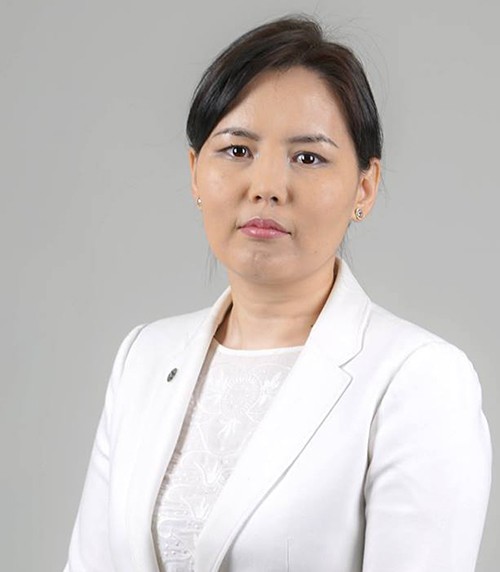

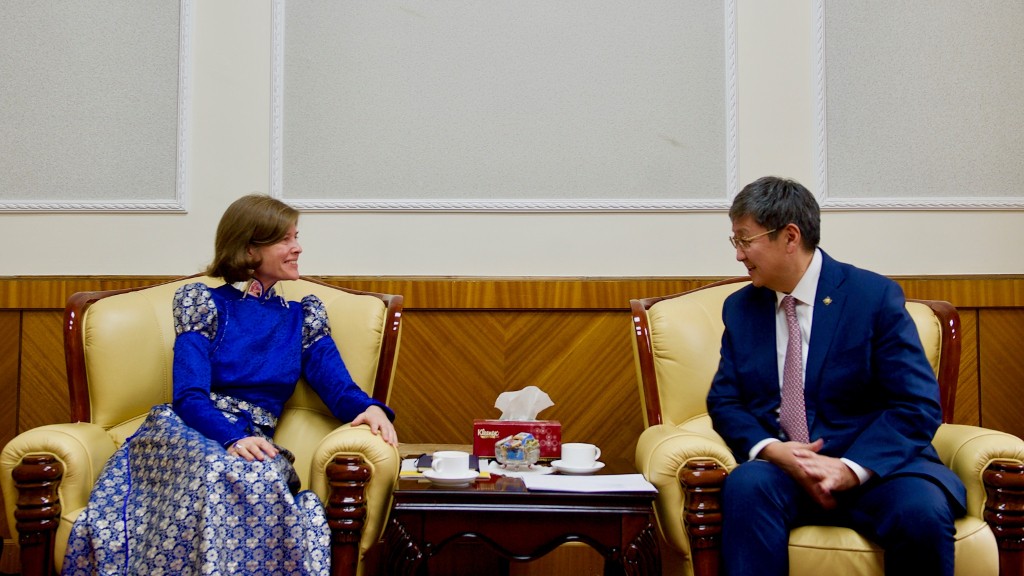
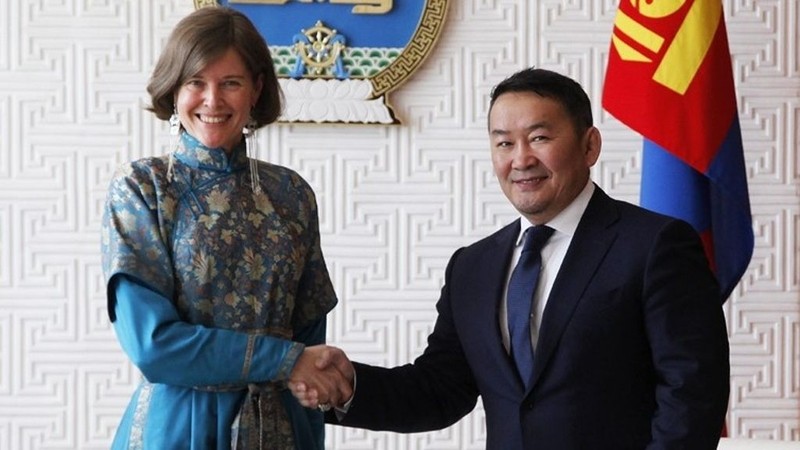



 -One of the 9 projects which the USD 468 million financing will support is Ulaanbaatar air quality improvement program, and this is a policy-based loan (PBL). What, in fact, is policy based loan?
-One of the 9 projects which the USD 468 million financing will support is Ulaanbaatar air quality improvement program, and this is a policy-based loan (PBL). What, in fact, is policy based loan?